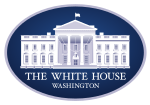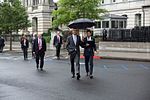First Division Monument
1924 sculpturesArtworks in the collection of the National Park ServiceBronze sculptures in Washington, D.C.Granite sculptures in Washington, D.C.Military monuments and memorials in the United States ... and 8 more
Monuments and memorials in Washington, D.C.Northwest (Washington, D.C.)Outdoor sculptures in Washington, D.C.Sculptures by Daniel Chester FrenchSculptures of women in Washington, D.C.Statues in Washington, D.C.United States sculpture stubsWashington, D.C. stubs

The First Division Monument is located in President's Park, south of State Place Northwest, between 17th Street Northwest and West Executive Avenue Northwest in Washington, DC, United States. The Monument commemorates those who died while serving in the 1st Infantry Division of the U.S. Army of World War I and subsequent wars.
Excerpt from the Wikipedia article First Division Monument (License: CC BY-SA 3.0, Authors, Images).First Division Monument
State Place Northwest, Washington
Geographical coordinates (GPS) Address External links Nearby Places Show on map
Geographical coordinates (GPS)
| Latitude | Longitude |
|---|---|
| N 38.8961 ° | E -77.0387 ° |
Address
First Division Monument
State Place Northwest
20429 Washington
District of Columbia, United States
Open on Google Maps






